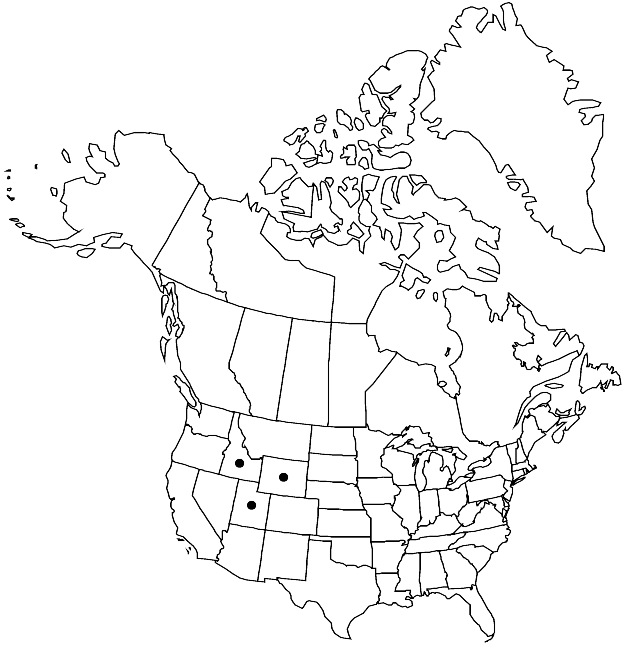Physaria prostrata
Novon 12: 327. 2002.
Perennials; caudex branched; densely pubescent, trichomes (usually sessile, rarely short-stalked), several-rayed, rays furcate or bifurcate, (umbonate, tuberculate throughout). Stems several from base, usually prostrate, rarely decumbent, (unbranched, often purplish, sparsely pubescent), to 1.5 dm. Basal leaves: blade deltate, hastate, or, less often, rhombic to elliptic, 1–5 cm, margins entire (often partially involute). Cauline leaves: (proximal shortly petiolate); blade linear to oblanceolate, 0.5–1.5 cm, margins entire. Racemes loose, elongated. Fruiting pedicels (ascending, slightly sigmoid to straight), 5–10 mm. Flowers: sepals (often purplish), oblong, lanceolate, or ovate, 4–6 mm, (median pair thickened apically); petals spatulate or cuneate, 5–8 (–9) mm, (margins undulate). Fruits ovoid or ellipsoid, slightly compressed, 3–5 (–6) mm, (base often gibbous); valves pubescent, trichomes loose, furcate near their bases and spreading, sometimes sparsely pubescent inside; ovules 4 (–8) per ovary; style 1.5–4 mm. Seeds flattened.
Phenology: Flowering May–Jun.
Habitat: Whitish sand and small rocks on steep slopes, dry hillsides, windswept knolls, shaley slopes
Elevation: 1800-2500 m
Distribution

Idaho, Utah, Wyo.
Discussion
Of conservation concern.
Physaria prostrata is sometimes found on igneous substrates, which is unusual for the genus.
Selected References
None.
Lower Taxa
"elongated" is not a number."thick" is not a number."dm" is not declared as a valid unit of measurement for this property.